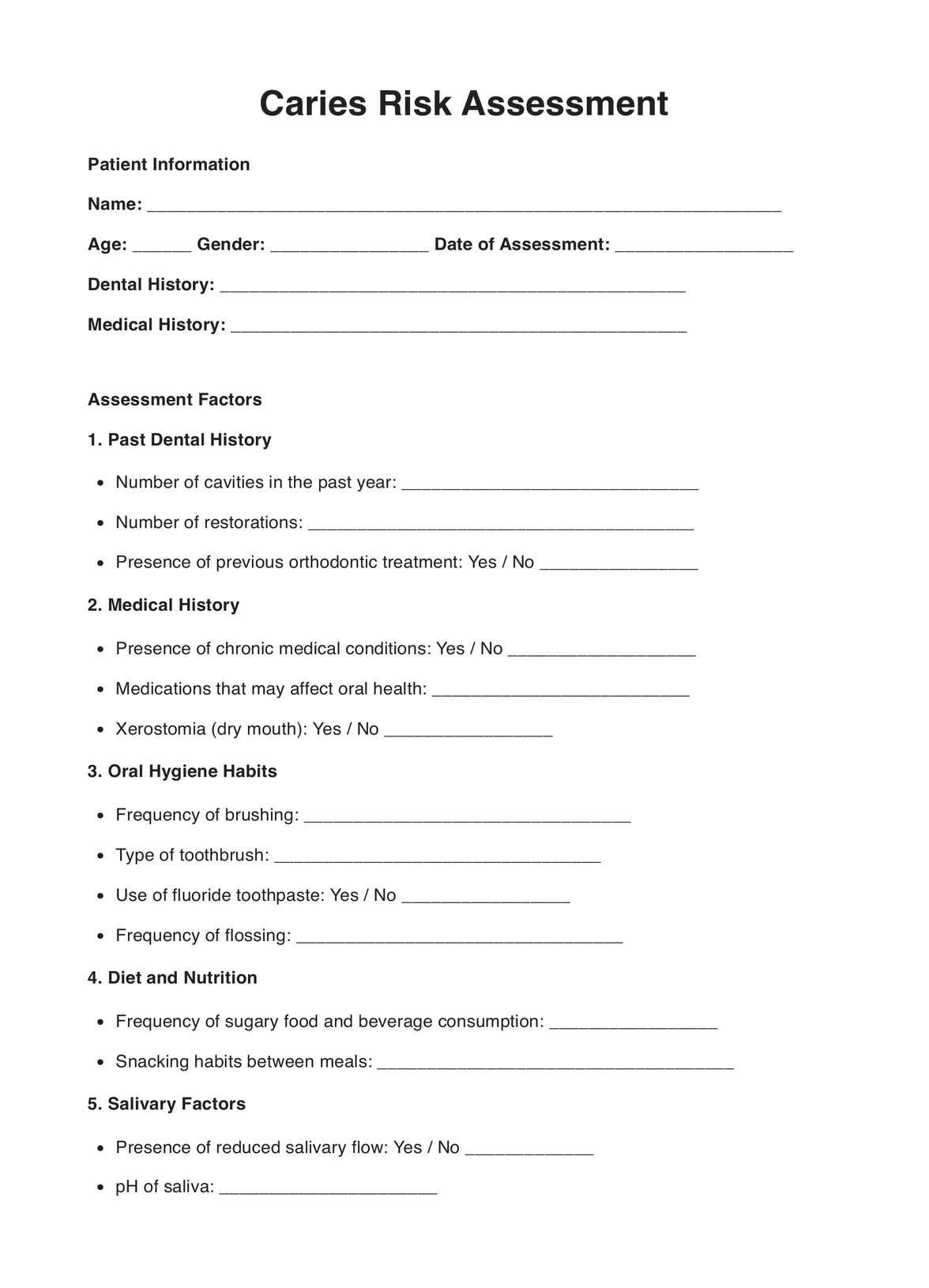CRA is beneficial for individuals of all ages. Children, adolescents, and adults are advised to undergo Caries Risk Assessment to know their dental cavities susceptibility. This is helpful for people with cavities, poor oral hygiene, high sugar consumption, and other relevant concerns.

Caries Risk Assessment
Prevent tooth decay and cavities through Caries Risk Assessment. Download our free PDF and start your healthier oral health journey.
Caries Risk Assessment Template
Commonly asked questions
CRA can be conducted by licensed and trained dental professionals, including dentists, dental hygienists, pediatric and geriatric dentists, dental therapists, and dental assistants, under the supervision of a licensed dentist. These trained experts use their knowledge, clinical skills, and specialized tools to evaluate an individual's risk factors for dental cavities.
It depends on varying factors, such as the complexity of the individual's dental history, the thoroughness of the examination, and the specific tools or questionnaires used by the dental professional. However, on average, a caries risk assessment can take 5 to 15 minutes during a routine dental visit. If additional tests or investigations are needed, it might take longer.
EHR and practice management software
Get started for free
*No credit card required
Free
$0/usd
Unlimited clients
Telehealth
1GB of storage
Client portal text
Automated billing and online payments











